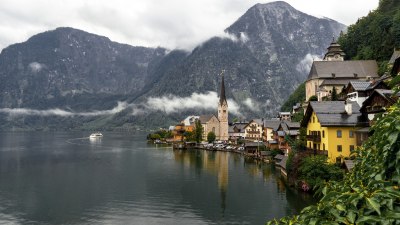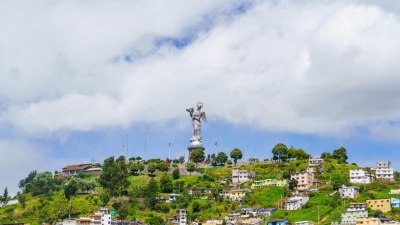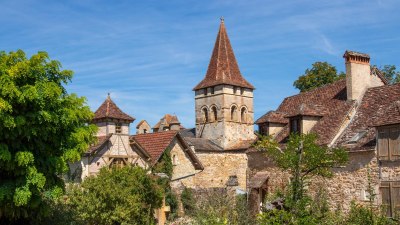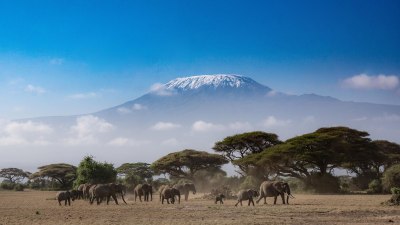The Sky Rests Low in Ladakh, India
Explore the breathtaking landscapes and rich culture of Ladakh, India where the sky meets the earth.
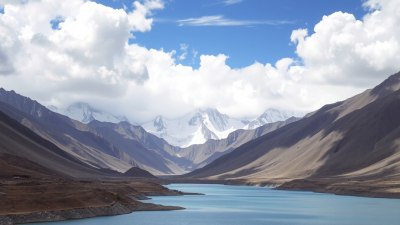
Image created with Flux Schnell
Ladakh, nestled in the northernmost part of India, is a land of picturesque landscapes that seem to capture the essence of nature in its purest form. With its towering mountains, serene lakes, and vibrant culture, this region is a treasure trove for travelers and adventurers alike. The name 'Ladakh' translates to 'Land of High Passes,' and it certainly lives up to its name with its stunning altitude, diverse terrain, and breathtaking scenery.
The unique geography of Ladakh is one of its most striking features. It is located in the Himalayas, bordered by the stunning peaks of the Zanskar range to the north and the great Karakoram range to the south. This region is characterized by stark terrain, high-altitude deserts, and spectacular valleys, making it a paradise for photographers and nature lovers. The sky, which often appears exceptionally low in this region due to the high altitude, creates a feeling of intimacy with the vast Himalayan landscape.
Geography and Climate
Tourists flock to Ladakh not only for its beauty but also for its unique climate. The arid landscape is punctuated by vibrant blue skies and dramatic weather changes, which add to the mystical allure of the region. Summers are short but pleasant, while winters can be harsh with heavy snowfall in certain areas. The change of seasons draws different shades and textures across the terrain, transforming the landscape almost on a daily basis.
The Nubra Valley, known for its sand dunes and views of the Khardung La Pass, is a highlight for many visitors. It offers a stunning contrast of stark white sands against the backdrop of towering mountains and azure skies. The region is also home to the famous double-humped Bactrian camels which add an exotic element to the landscape.
Cultural Heritage
Ladakh is not just about its natural beauty; it is also a region with a rich cultural heritage influenced by both Buddhism and Islam. The ancient monasteries that dot the mountains speak volumes about its history and the spiritual importance of this land. Hemis Monastery, one of the largest and wealthiest in Ladakh, is known for its vibrant festivals and deep-rooted traditions. The annual Hemis Festival, held in June, attracts thousands of tourists eager to witness traditional dance performances, rituals, and the colorful displays of local culture.
Aside from Hemis, other notable monasteries include Thiksey and Diskit, which are known for their stunning architecture and breathtaking views. Visitors can participate in meditation retreats or simply enjoy the serene environment, which is perfect for those looking to escape the hustle and bustle of city life. The monks, who live a life dedicated to spiritual practice, offer insights into Buddhism and the philosophies that govern their way of life, enriching the overall experience of travelers.
Adventure Tourism
For adventure enthusiasts, Ladakh offers a range of activities that cater to all levels of thrill-seekers. Trekking is perhaps the most popular option, with numerous trekking routes that provide breathtaking views of the landscapes. The Markha Valley trek, for instance, is renowned for its beauty and cultural interactions with local nomadic families.
Mountain biking has also gained popularity in recent years, with routes that take riders through challenging terrains and stunning scenery. River rafting in the Indus River is another exciting way to experience the region, allowing adventurers to tackle the thrilling waters amidst spectacular landscapes.
Wildlife and Biodiversity
Ladakh is not just an attraction for its landscapes and culture; it is also home to a diverse range of wildlife. The high-altitude deserts are inhabited by unique species such as the elusive snow leopard, ibex, and Tibetan antelope. The area is part of several protected reserves, including the Hemis National Park, which is vital for wildlife conservation efforts and offers opportunities for eco-tourism.
Birdwatching is another rewarding activity in Ladakh, as the region is home to numerous migratory birds during the summer months. The spectacular Pangong Lake, famous for its ever-changing colors, is a notable site for birdwatching as it attracts several species, especially during the migration seasons.
Culinary Delights
No travel experience can be complete without indulging in local cuisine. Ladakhi cuisine is a flavorful blend of Tibetan and Indian influences with signatures such as momos (dumplings), thukpa (noodle soup), and the famous butter tea. The use of local produce and traditional cooking methods adds a unique flavor to every dish.
Visitors can partake in local cooking classes to learn about Ladakhi culinary traditions and even explore local markets to experience the vibrant colors and aromas of the region. Street food is a highlight of the experience, with vendors offering quick bites that reflect the unique flavors of Ladakh.
Community and Hospitality
The hospitality of Ladakhi people is perhaps one of the region's best-kept secrets. Known for their warmth and friendliness, locals often invite travelers into their homes for tea and share stories of their daily lives, fostering cross-cultural interactions that enhance the travel experience. Community-driven tourism has been promoted in various villages, allowing visitors to engage with local communities and support their economies.
In addition to this genuine hospitality, numerous homestays offer travelers a chance to experience the local lifestyle, providing not only a bed but also an opportunity to participate in the daily activities of the household.
Travel Tips
Planning a trip to Ladakh requires some preparation due to its high altitude and relatively remote location. Acclimatization is crucial; travelers should take time to adapt to the altitude before engaging in extensive physical activities. Staying hydrated, eating light meals, and avoiding alcohol are essential tips to prevent altitude sickness.
Transporting oneself around Ladakh is primarily through local taxis or rented bikes. The road conditions can vary widely, and it's advisable to travel during the summer months when the weather is generally more favorable. Pack layers of clothing, as temperature fluctuations can be extreme between day and night.
The sky rests low in Ladakh, creating a unique atmosphere that invites exploration and reflection. Rich in culture, history, and natural beauty, this wonderful region of India presents a canvas with endless opportunities for adventure, connections, and discovery. Whether you're seeking tranquility or thrill, Ladakh promises an unforgettable experience that lingers in your mind long after you leave its stunning landscapes.


